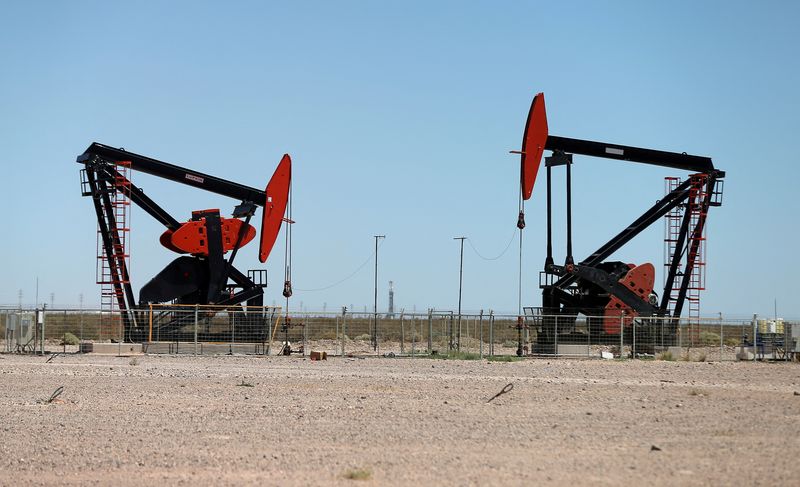Commodities
Europe back to coal: Will the transition from gas to coal be easy for Europe?

Europe back to coal. With acute power shortages, most of the EU faces significant challenges in transitioning from gas to coal, especially when Russia has begun reducing gas supplies, according to Business Insider.
Germany is an exception to the rule, as many of its coal-fired power plants have not been decommissioned.
While the rest of Europe is preparing for a hard and harsh winter with heating shortages for offices and apartments, Germany has remembered the cheap and dirty source of energy – coal – to provide enough heat before the cold weather arrives.
According to Rystad Energy, this year Germany increased its coal-fired power generation more than any other country in Europe – by 18.2%, indicating an accelerated transition to an alternative fuel source.
Coal in European history has played an important role, but before the recent events, all developed countries tried to abandon it. And today, in addition to Germany, Austria, the Netherlands and Italy are also considering reusing coal, but for other European countries switching to coal may prove much more difficult.
There is one obvious problem in the way of this bold plan, though: record-low water levels in the Rhine River, which carries goods such as coal, chemicals, and grain. The Rhine has shrunk due to a severe heat wave, leading the government to worry about possible coal shortages due to reduced inland navigation on the river.
But even with this problem solved, according to the International Energy Agency, the global energy market will be “extremely tight” in the third and fourth quarters of this year due to restrictions on energy imports from Russia, which means we need to prepare for a very harsh winter and look for other alternatives.
Earlier we reported that experts predicted an increase in the price of French fries and chips in Europe due to drought.
Commodities
New technology helps US shale oil industry start to rebuild well productivity

By Sabrina Valle
HOUSTON (Reuters) – Technology advances are making it possible for U.S. shale oil and gas companies to reverse years of productivity declines, but the related requirement to frontload costs by drilling many more wells is deterring some companies from doing so.
While overall output is at record levels, the amount of oil recovered per foot drilled in the Permian Basin of Texas, the main U.S. shale formation, fell 15% from 2020 to 2023, putting it on par with a decade ago, according to energy researcher Enverus.
That is because fracking, the extraction method that emerged in the mid-2000s, has become less efficient there. In the technique, water, sand and chemicals are injected at high pressure underground to release the trapped resources.
Two decades of drilling wells relatively close together, resulting in hundreds of thousands of wells, have interfered with underground pressure and made getting oil out of the ground more difficult.
“Wells are getting worse and that is going to continue,” said Dane Gregoris, managing director at Enverus Intelligence Research firm.
But new oilfield innovations, which began being implemented more widely last year, have made it possible for fracking to be faster, less expensive and higher yielding.
The advances in the past few years include the ability to double the length of lateral wells to three miles and equipment that can simultaneously frack two or three wells. Electric pumps can replace high-cost, high maintenance diesel equipment.
“Companies now can complete (frack) wells faster and cheaper,” said Betty Jiang, an oil analyst with Barclays.
remove ads
.
A drawback to the new simultaneous fracking technology, also called simul-frac, is that companies need to have lots of wells drilled and ready to move to the fracking phase in unison before they can proceed. Pumps inject fluids into and get oil and gas out of two or three wells at the same time, instead of just one.
Because these act as an interconnected system, wells cannot be added piecemeal. But companies eager to cut costs have not deployed enough drill rigs to capitalize fully on the potential of the innovations.
“Instead of drilling the wells and getting production in a few months, you have got to drill eight wells, or 10 wells,” said Mike Oestmann, CEO of Tall City Exploration.
“That’s $100 million in the ground before you see any revenue,” he said. “For small companies like Tall City, that’s a big challenge.”
The number of active drilling rigs in the U.S. this month fell nearly 18% from a year ago.
Simul-fracking can also lower well costs by between $200,000-$400,000, or 5%-10% apiece, said Thomas Jacob, senior vice president of supply chain at researcher Rystad Energy estimates.
NEW TECH SUPPORTS RECORD PRODUCTION
Oil analysts anticipate use of the new technology will accelerate. “We saw a trend of companies shifting to simul-fracs in the second half last year, and that is only going to continue,” said Saeed Ali Muneeb at energy analysis firm Kayrros.
Longer wells and advancements in fracking techniques are more than offsetting declining productivity and limited rig count, helping the U.S. reach record oil production volumes.
remove ads
.
The top U.S. shale-producing regions are forecast next month to hit the highest output in five months with new-well production up 28% from a year ago, according to the U.S. Energy Information Administration.
“Companies are making a fine-tuning and getting better and better in fracking,” said Oestmann. “Without them, production would fall.”
Innovations are going to gain scale once top producers like Exxon Mobil Corp (NYSE:) and Chevron Corp (NYSE:) adopt them more broadly, shale experts said.
Mid-sized shale firms like Pioneer Natural Resources (NYSE:) that can afford the costs were first to embrace the new methods. The positive results make them more attractive to big firms like Exxon, which is awaiting regulatory approval to buy Pioneer.
But the biggest shale producers have committed to using oil revenue to finance shareholder returns rather than drilling expansion. Two of the biggest shale oil operators, Exxon and Chevron, have missed targets for Permian production in the past years.
Exxon said its own new fracking technology will allow it to extract an extra 700,000 barrels of oil equivalent per day (boepd) from Pioneer’s assets by 2027, tripling output there to 2 million boepd.
Chevron is increasing use of simul-fracs and says the technique will help it increase Permian production by 10% this year to 900,000 boepd. It also completed a triple-frac pilot and anticipates using it more widely, a spokesperson said.
Commodities
Oil prices steady after rallying on US stock decline, business data

By Robert Harvey and Deep Kaushik Vakil
LONDON (Reuters) -Brent crude oil prices steadied around $88 a barrel on Wednesday after rallying in the previous session on a surprise fall in stocks and a drop in business activity in the world’s largest oil consumer.
futures were down 12 cents, or 0.14%, to $88.30 a barrel by 1158 GMT, while U.S. West Texas Intermediate crude futures had lost 23 cents, or 0.28%, to $83.13.
That reversed some of Brent’s 1.6% gain from the previous session, when the market was also buoyed by a weaker U.S. dollar and as investors dialled down concerns over conflict in the Middle East. [USD/]
Perceived de-escalation between Iran and Israel could remove another $5-10 a barrel of “the still elevated geopolitical risk premium” in coming months, Goldman Sachs analysts said in a note, putting a $90 per barrel ceiling on Brent.
U.S. business activity cooled in April to a four-month low, with S&P Global saying on Tuesday that its flash Composite PMI Output Index, which tracks the manufacturing and services sectors, fell to 50.9 this month from 52.1 in March.
“The world’s biggest economy currently falls into the ‘bad news is good news category'”, said Tamas Varga at oil broker PVM. “The odds of a Fed rate cut have grown once again.”
U.S. interest rate cuts could bolster economic growth and, in turn, stimulate demand for oil.
“Attention shifted to macro issues, to the stock markets and to the dollar and none of them disappointed,” Varga added.
remove ads
.
In Germany, business morale improved more than expected in April according to a survey on Wednesday, boosting hopes that the worst may be over for Europe’s biggest economy.
U.S. crude inventories fell by 3.237 million barrels in the week ended April 19, according to market sources citing American Petroleum Institute figures. In contrast, six analysts polled by Reuters had expected a rise of 800,000 barrels. [EIA/S]
Traders will be watching the official data release on oil and product stockpiles at 1430 GMT.
Meanwhile, the Israel-Hamas conflict continues to rage with some of the heaviest shelling in weeks on Tuesday, while sources on Wednesday said Israel is preparing to evacuate Rafah ahead of a promised assault on the city.
Commodities
Oil prices marginally lower; more US economic cues in focus

Investing.com– Oil prices slipped slightly Wednesday, with traders digesting easing tensions in the Middle East, a drop in U.S> crude stockpiles ahead of upcoming clues over the strength of the U.S. economy.
At 08:50 ET (12:50 GMT), fell 0.1% to $88.36 a barrel, while fell 0.3% to $83.13 a barrel.
Industry data showing an unexpected draw in U.S. inventories offered some support to crude prices, as did weakness in the after softer-than-expected U.S. purchasing managers index data.
“Sentiment in the oil market remains soft,” said analysts at ING, in a note. “The reduced premium for geopolitical risks overshadowed bullish inventory numbers by the American Petroleum Institute.”
US inventories unexpectedly fall- API
Data from the American Petroleum Institute showed on Tuesday that U.S. saw a draw of 3.2 million barrels in the week to April 19, ducking expectations for a build of 1.8 million barrels.
The reading usually heralds a similar trend from , which is due later on Wednesday, and indicates some tightening in U.S. markets as the travel-heavy summer season approaches.
A sustained draw in gasoline inventories in particular indicated that fuel demand in the country remained strong, even as gas prices rose sharply in recent weeks.
But analysts doubt just how high gas prices will rise, given that high gas prices at the pump are a key point of contention for the Biden administration.
Iran-Israel tensions ease
Oil prices were nursing a sharp drop from near six-month highs over the past week, as a deescalation in tensions between Iran and Israel saw traders largely price out a risk premium from oil markets.
remove ads
.
But the Israel-Hamas war showed little signs of stopping, keeping some risks of Middle Eastern geopolitics still in play for crude markets.
US GDP data, PCE inflation data awaited
Markets were now awaiting first-quarter data from the U.S., due on Thursday, and then Friday’s data, the Fed’s preferred inflation gauge,.for more cues on the world’s biggest fuel consumer.
The readings are also expected to tie into the outlook for U.S. interest rates, given that strength in the economy gives the Federal Reserve more headroom to keep interest rates higher for longer.
This notion was somewhat dented by weaker-than-expected data for April, which sparked losses in the dollar on Tuesday. A drop in the dollar benefits oil prices, given that they are priced in the greenback.
Weakness in the dollar also helps buoy demand by making oil cheaper for international buyers.
(Ambar Warrick contributed to this article.)

 Forex2 years ago
Forex2 years agoForex Today: the dollar is gaining strength amid gloomy sentiment at the start of the Fed’s week

 Forex2 years ago
Forex2 years agoHow is the Australian dollar doing today?

 Forex1 year ago
Forex1 year agoUnbiased review of Pocket Option broker

 Forex2 years ago
Forex2 years agoDollar to pound sterling exchange rate today: Pound plummeted to its lowest since 1985

 Cryptocurrency2 years ago
Cryptocurrency2 years agoWhat happened in the crypto market – current events today

 World2 years ago
World2 years agoWhy are modern video games an art form?

 Stock Markets2 years ago
Stock Markets2 years agoMorgan Stanley: bear market rally to continue

 Economy2 years ago
Economy2 years agoCrude oil tankers double in price due to EU anti-Russian sanctions

































